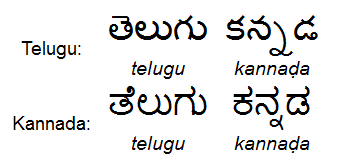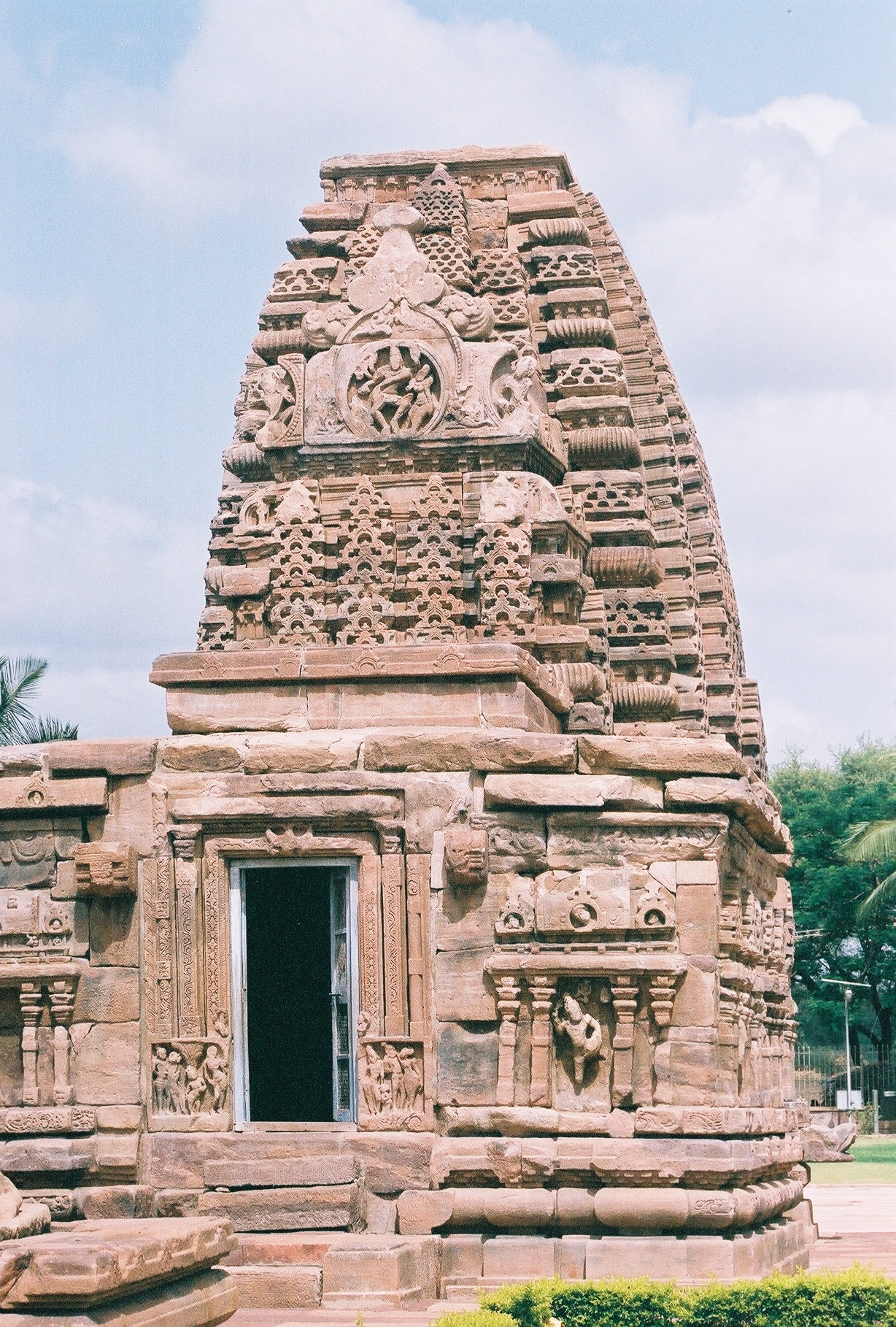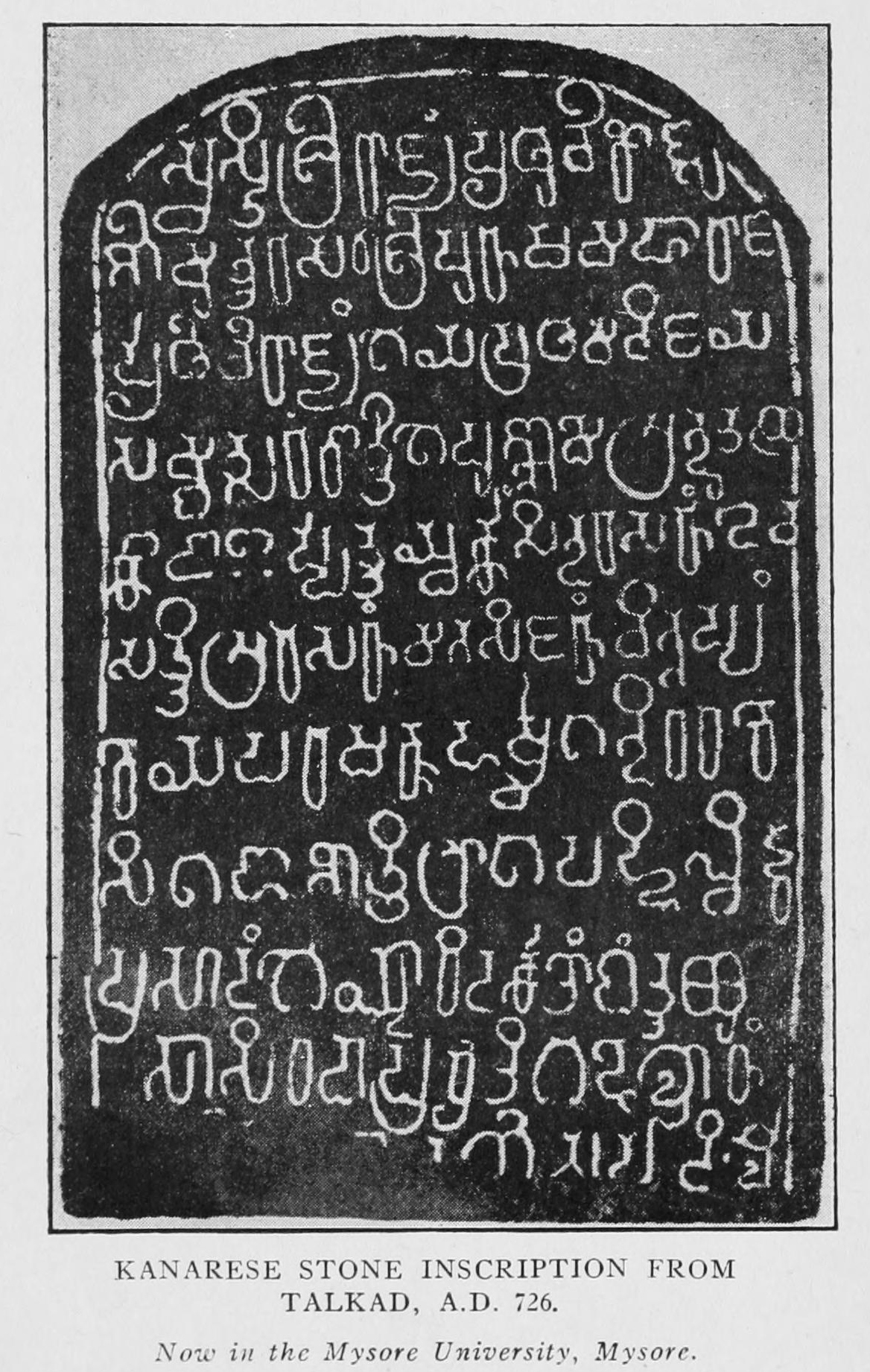|
Kadamba Alphabet
The Kadamba script is the first writing system devised specifically for writing Kannada, and Telugu language. The Kadamba script is also known as ''Pre-Old-Kannada script.'' The Kadamba script is one of the oldest scripts of the southern group of writing systems that developed from the ancient Brahmi script. By the 5th century CE it became distinct from other Brahmi variants and was used in what are now the South Indian states of Karnataka and Andhra Pradesh. It evolved into the Kannada-Telugu script by the 10th century CE and was used to write the Kannada and Telugu languages. It is also distantly related to the Sinhala script. History During the rule of Kadamba dynasty (325-550), major change in the Brahmi script resulted in the Kadamba Kannada script, letters were shorter and round in shape. During (325 to 1000 AD) the rule of the Western Ganga dynasty in the southern parts of Karnataka the Kannada script used differently (also known as Ganga script) in rock edicts and c ... [...More Info...] [...Related Items...] OR: [Wikipedia] [Google] [Baidu] |
Abugida
An abugida (; from Geʽez: , )sometimes also called alphasyllabary, neosyllabary, or pseudo-alphabetis a segmental Writing systems#Segmental writing system, writing system in which consonant–vowel sequences are written as units; each unit is based on a consonant letter, and vowel notation is secondary, similar to a diacritical mark. This contrasts with a full alphabet, in which vowels have status equal to consonants, and with an abjad, in which vowel marking is absent, Abjad#Impure abjads, partial, or optional – in less formal contexts, all three types of the script may be termed "alphabets". The terms also contrast them with a syllabary, in which a single symbol denotes the combination of one consonant and one vowel. Related concepts were introduced independently in 1948 by James Germain Février (using the term ) and David Diringer (using the term ''semisyllabary''), then in 1959 by Fred Householder (introducing the term ''pseudo-alphabet''). The Ethiopian Semitic langu ... [...More Info...] [...Related Items...] OR: [Wikipedia] [Google] [Baidu] |
Kannada-Telugu Script
The Telugu–Kannada script (or Kannada–Telugu script) was a writing system used in Southern India. Despite some significant differences, the scripts used for the Telugu and Kannada languages remain quite similar and highly mutually intelligible. Satavahanas and Chalukyas influenced the similarities between Telugu and Kannada scripts. History The Dravidian family comprises about 73 languages including Telugu, Tamil, Kannada, and Malayalam. Satavahanas introduced the Brahmi to present-day Telugu and Kannada-speaking regions. Handbook of Literacy in Akshara Orthography, R. Malatesha Joshi, Catherine McBride (2019), p. 29 But according to Georg Bühler, it seems more likely that the Bhattiprolu script represents a provincial offshoot of early Brahmi in the south, rather than a separate line of development from a hypothetical Semitic prototype itself, as Bühler believed. During the 5th to 7th centuries the early Bādāmi Chālukyās and early Banavasi Kadambās used an ear ... [...More Info...] [...Related Items...] OR: [Wikipedia] [Google] [Baidu] |
Kalinga Script
The Kalinga script or Southern Nagari is a Brahmic script used in the region of what is now modern-day Odisha, India and was primarily used to write Odia language in the inscriptions of the kingdom of Kalinga (historical kingdom), Kalinga which was under the reign of early Eastern Ganga dynasty. By the 12th century, with the defeat of the Somavamshi dynasty by the Eastern Ganga monarch Anantavarman Chodaganga and the subsequent reunification of the Trikalinga(the three regions of ancient Odra- Kalinga, Utkala and Dakshina Koshala) region, the Kalinga script got replaced by the Siddhaṃ script-derived Proto-Oriya script which became the ancestor of the modern Odia script. Early Kalinga type/ Kalinga Brahmi The Hathigumpha inscription at Udayagiri and Khandagiri Caves, Udayagiri caves in Bhubaneswar is written in the deep-cut Brahmi script which is also known as Early Kalinga Type. The Ashoka inscriptions, other inscriptions and fragments of broken pottery from South India are re ... [...More Info...] [...Related Items...] OR: [Wikipedia] [Google] [Baidu] |
Ancient Philippine Scripts
Suyat (''Baybayin:'' , ''Hanunoo script, Hanunó'o:'' , ''Buhid script, Buhid:'' , ''Tagbanwa script, Tagbanwa:'' , ''Kulitan, Modern Kulitan:'' ''Jawi alphabet, Jawi Arabic script, (Arabic):'' ) is a collective name for the Brahmic scripts of Philippine ethnolinguistic groups. The term was suggested and used by cultural organizations in the Philippines to denote a unified neutral terminology for Philippine scripts. Philippine scripts Ancient Philippine scripts are various writing systems that developed and flourished in the Philippines around 300 BC. These scripts are related to other Southeast Asian systems of writing that developed from South Indian Brahmi scripts used in Edicts of Ashoka, Asoka Inscriptions and Pallava script, Pallava Grantha, a type of writing used in the writing of Palm-leaf manuscript, palm leaf books called ''Grantha script'' during the ascendancy of the Pallava dynasty about the 5th century, [...More Info...] [...Related Items...] OR: [Wikipedia] [Google] [Baidu] |
Talagunda Pillar Inscription
The Tālagunda pillar inscription of Kakusthavarman is an epigraphic record in Sanskrit found in the ruined Pranavalingeshwara temple northwest of village Talagunda, Karnataka, India. It is engraved on hard grey granite and dated to between 455 and 470 CE. It gives an account of a Kadamba Dynasty, Kadamba dynasty and the times of king Śāntivarma in northwest Karnataka. Location The pillar is located in front of the ruined and partially restored Prāṇaveśvara Śiva temple – also called Pranavalingeshwara temple – in Talagunda village, Shikaripur taluk in Shimoga district, Karnataka, India. It is close to the Karnataka State Highway 1, about 90 kilometers west of Davanagere and 80 kilometers northwest of Shivamogga city. Publication The inscription was discovered in 1894 by B. L. Rice, then Director of Archaeological Researches in Mysore and a celebrated pioneer of historical studies in Karṇāṭaka. He gave a photograph to the colonial era Indologist Buhler, who publis ... [...More Info...] [...Related Items...] OR: [Wikipedia] [Google] [Baidu] |
Halmidi Inscription
The Halmidi inscription is the oldest known Kannada-language inscription in the Kadamba script. While estimates vary slightly, the inscription is often dated to between 450 CE - 500 CE. The inscription was discovered in 1936 by Dr. M. H. Krishna, the Director of Archaeology of the (princely) State of Mysore (present-day Karnataka region of India), in Halmidi, a village in the Hassan district. The original inscription is kept in the Office of the Director of Archaeology and Museums, Govt. of Karnataka, Mysore, and a fibreglass replica has been installed in Halmidi. Discovery and dating In a report published in a Mysore Archaeological Department Report (MAR) in 1936, Krishna dated the inscription to 450 AD, on paleographical grounds. Later scholars have variously dated the inscription to 450 AD, 470 AD, 500 AD, "about 500", and "end of the fifth century A. D. or the beginning of the 6th century A.D." Epigraphist, D. C. Sircar has dated the inscription to "about the end of ... [...More Info...] [...Related Items...] OR: [Wikipedia] [Google] [Baidu] |
Kadamba Inscription From Kerala
Kadamba is a Sanskrit word meaning ''dove'' and may refer to: Dynasties * Kadamba dynasty (other) **Kadamba dynasty (345–525 CE) **Kadambas of Hangal (980–1031 CE); include the minor kingdoms of Bankapur, Bayalnad, Nagarkhanda and Uchchangi **Kadambas of Goa (10th to the 14th century CE) ** Kadambas of Halasi (founded by Mayurasharma in about 4th century AD) ** Kadambas of Bayalnadu ( Vainadu) ** Kadambas of Belur ** Kadambas of Bankapura ** Kadambas of Uchchangi ** Kadambas of Nagarkhanda ** Kadambas of Kalinga Films * ''Kadamba'' (1983 film) * ''Kadamba'' (2004 film) People * Kadamba Kanana Swami, an ISKCON guru * Kadamba Simmons, a British actress and model Other * Kadamba architecture *Kadamba script *Kadamba tree *Kadamba Transport Corporation, a state owned transport company (Goa) * INS ''Kadamba'', a new base of the Indian Navy See also * Kadamban ''Kadamban'' () is a 2017 Indian Tamil-language action drama film written and directed by N. Ragavan. It ... [...More Info...] [...Related Items...] OR: [Wikipedia] [Google] [Baidu] |
Copper Plates NMND-9
Copper is a chemical element; it has symbol Cu (from Latin ) and atomic number 29. It is a soft, malleable, and ductile metal with very high thermal and electrical conductivity. A freshly exposed surface of pure copper has a pinkish-orange color. Copper is used as a conductor of heat and electricity, as a building material, and as a constituent of various metal alloys, such as sterling silver used in jewelry, cupronickel used to make marine hardware and coins, and constantan used in strain gauges and thermocouples for temperature measurement. Copper is one of the few metals that can occur in nature in a directly usable, unalloyed metallic form. This means that copper is a native metal. This led to very early human use in several regions, from . Thousands of years later, it was the first metal to be smelted from sulfide ores, ; the first metal to be cast into a shape in a mold, ; and the first metal to be purposely alloyed with another metal, tin, to create bronze, . Commonly ... [...More Info...] [...Related Items...] OR: [Wikipedia] [Google] [Baidu] |
Rastrakutas
The Rashtrakuta Empire was a royal Indian polity ruling large parts of the Indian subcontinent between the 6th and 10th centuries. The earliest known Rashtrakuta inscription is a 7th-century copper plate grant detailing their rule from Manapur, a city in Central or West India. Other ruling Rashtrakuta clans from the same period mentioned in inscriptions were the kings of Achalapur and the rulers of Kannauj. Several controversies exist regarding the origin of these early Rashtrakutas, their native homeland and their language. The Elichpur clan was a feudatory of the Badami Chalukyas, and during the rule of Dantidurga, it overthrew Chalukya Kirtivarman II and went on to build an empire with the Gulbarga region in modern Karnataka as its base. This clan came to be known as the Rashtrakutas of Manyakheta, rising to power in South India in 753 AD. At the same time the Pala dynasty of Bengal and the Prathihara dynasty of Gurjaratra were gaining force in eastern and northwest ... [...More Info...] [...Related Items...] OR: [Wikipedia] [Google] [Baidu] |
Chalukya Dynasty
The Chalukya dynasty () was a Classical Indian dynasty that ruled large parts of south India, southern and central India between the 6th and the 12th centuries. During this period, they ruled as three related yet individual dynasties. The earliest dynasty, known as the "Badami Chalukyas", ruled from Vatapi (modern Badami) from the middle of the 6th century. The Badami Chalukyas began to assert their independence at the decline of the Kadamba Dynasty, Kadamba kingdom of Banavasi and rapidly rose to prominence during the reign of Pulakeshin II. After the death of Pulakeshin II, the Eastern Chalukyas became an independent kingdom in the eastern Deccan Plateau, Deccan. They ruled from Vengi until about the 11th century. In the western Deccan, the rise of the Rashtrakutas in the middle of the 8th century eclipsed the Chalukyas of Badami before being revived by their descendants, the Western Chalukyas, in the late 10th century. These Western Chalukyas ruled from Kalyani (mo ... [...More Info...] [...Related Items...] OR: [Wikipedia] [Google] [Baidu] |
Telugu-Kannada Alphabet
The Telugu–Kannada script (or Kannada–Telugu script) was a writing system used in Southern India. Despite some significant differences, the scripts used for the Telugu and Kannada languages remain quite similar and highly mutually intelligible. Satavahanas and Chalukyas influenced the similarities between Telugu and Kannada scripts. History The Dravidian family comprises about 73 languages including Telugu, Tamil, Kannada, and Malayalam. Satavahanas introduced the Brahmi to present-day Telugu and Kannada-speaking regions. Handbook of Literacy in Akshara Orthography, R. Malatesha Joshi, Catherine McBride (2019), p. 29 But according to Georg Bühler, it seems more likely that the Bhattiprolu script represents a provincial offshoot of early Brahmi in the south, rather than a separate line of development from a hypothetical Semitic prototype itself, as Bühler believed. During the 5th to 7th centuries the early Bādāmi Chālukyās and early Banavasi Kadambās used an ear ... [...More Info...] [...Related Items...] OR: [Wikipedia] [Google] [Baidu] |
Western Ganga Dynasty
Western Ganga was an important ruling dynasty of ancient Karnataka in India which lasted from about 350 to 999 CE. They are known as "Western Gangas" to distinguish them from the Eastern Ganga Dynasty, Eastern Gangas who in later centuries ruled over Kalinga (historical region), Kalinga (modern Odisha and Northern Andhra Pradesh). The general belief is that the Western Gangas began their rule during a time when multiple native clans asserted their freedom due to the weakening of the Pallava empire in South India, a geo-political event sometimes attributed to the southern conquests of Samudra Gupta. The Western Ganga sovereignty lasted from about 350 to 550 CE, initially ruling from Kolar, Karnataka, Kolar and later, moving their capital to Talakadu on the banks of the Kaveri River in modern Mysore district. After the rise of the imperial Chalukya dynasty, Chalukyas of Badami, the Gangas accepted Chalukya overlordship and fought for the cause of their overlords against the Pal ... [...More Info...] [...Related Items...] OR: [Wikipedia] [Google] [Baidu] |







